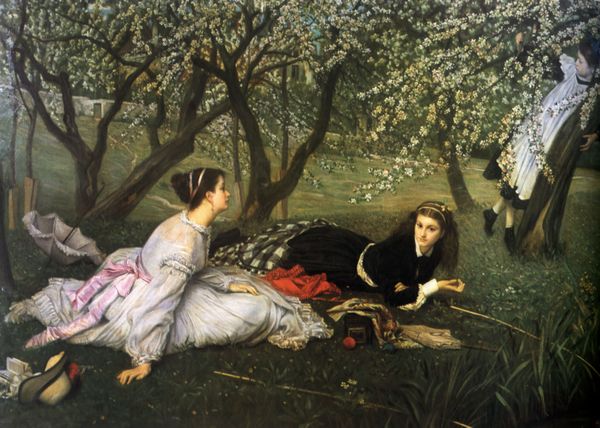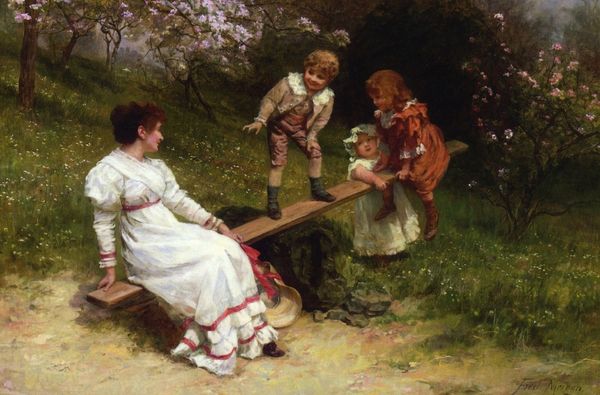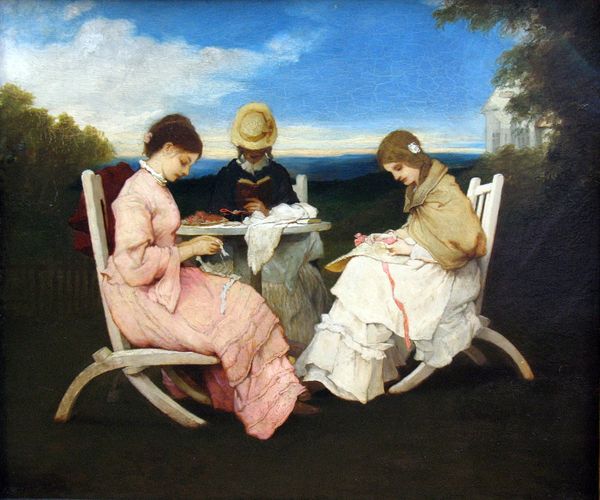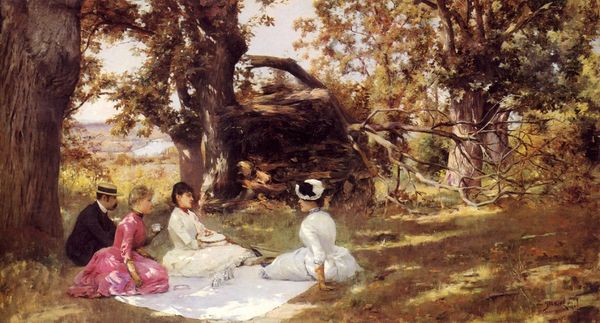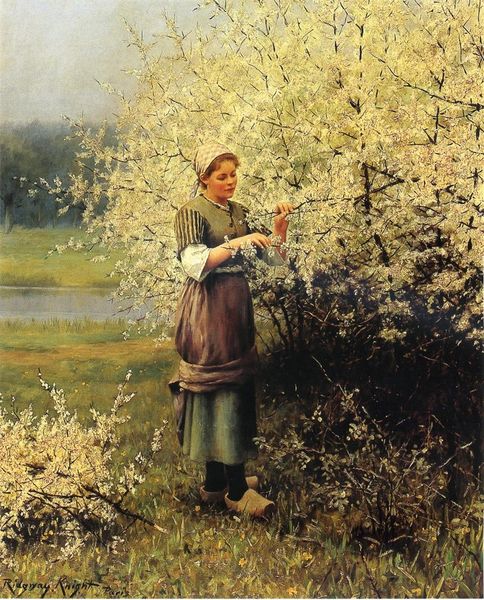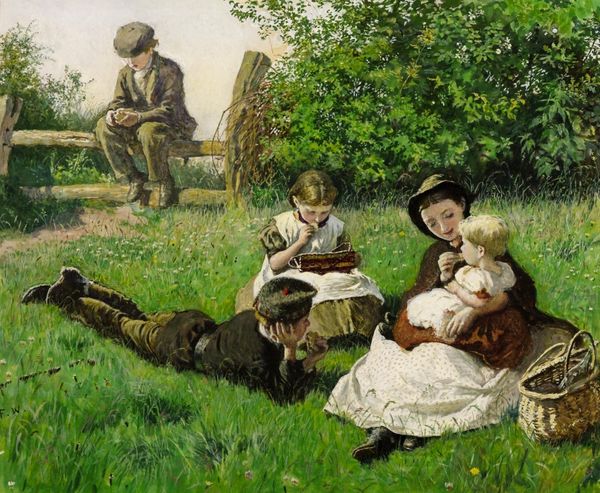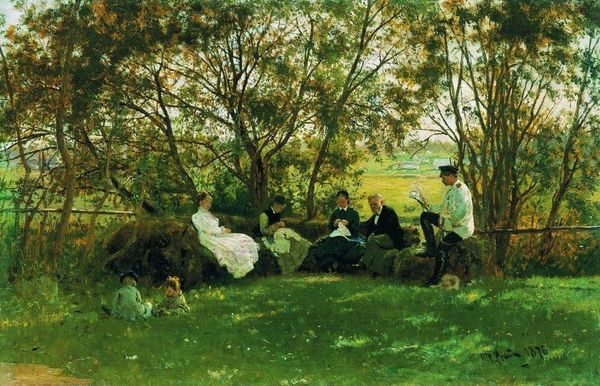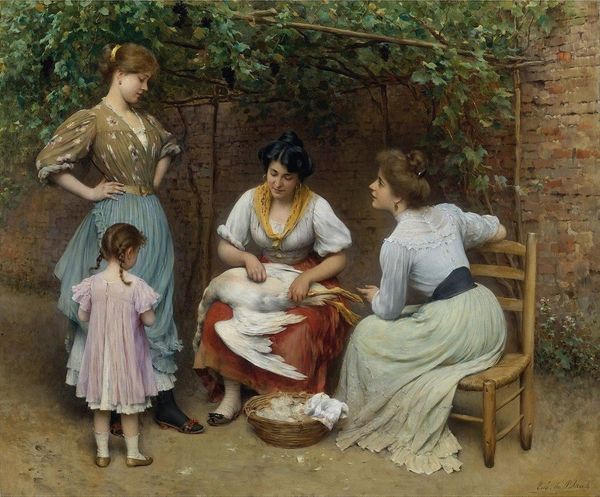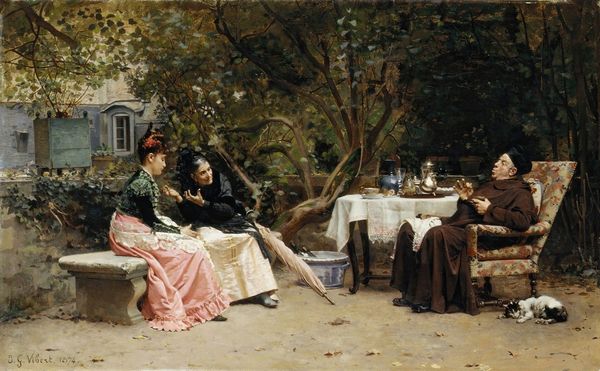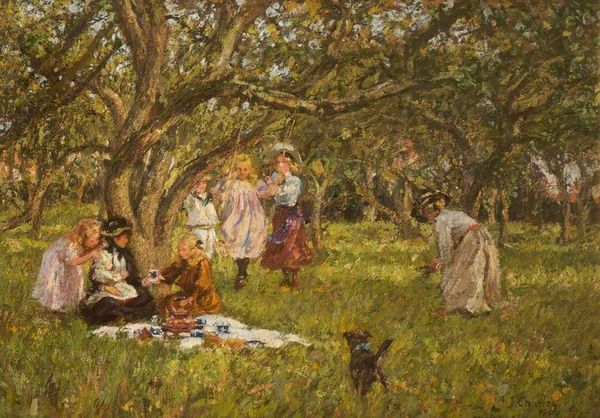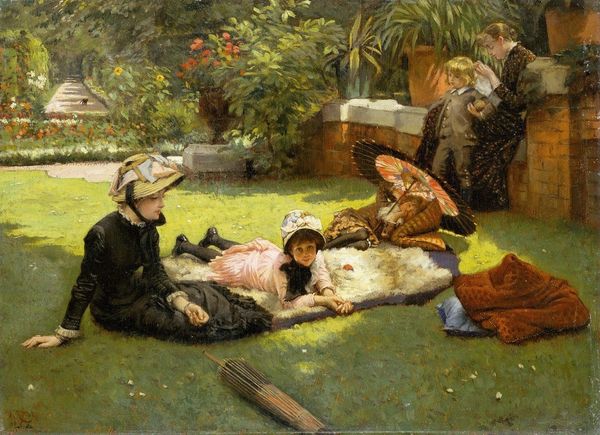
Dimensions: 110.5 x 172.7 cm
Copyright: Public domain
Curator: Let’s spend a moment with Sir John Everett Millais’s “Apple Blossoms,” executed in oil paint en plein-air in 1859. Editor: Oh, heavens, it's like stepping into a dream of perpetual girlhood, isn't it? A bunch of rosy-cheeked sprites caught in the middle of a garden picnic. There’s a hazy warmth about it… a languid charm. Curator: Precisely. Note the distribution of figures within the pictorial space: a frieze-like arrangement against the backdrop of blooming trees. The composition unfolds as a series of carefully balanced diagonals and verticals, creating a stable yet dynamic structure. Editor: I love how the composition feels very deliberate but somehow remains natural! Millais obviously controlled the scene well, or, more like a theatre mise-en-scène in the open air, really. The poses are lovely, elegant… But, if you stare a little more intensely, is it just me, or does a slight air of melancholia float in the painting as well? Curator: An astute observation. The painting functions on multiple symbolic registers. While ostensibly depicting a scene of youthful leisure, it can be interpreted through the Pre-Raphaelite emphasis on naturalism and an idealized past. The apple blossoms themselves can be seen as emblems of fleeting beauty, evoking themes of transience and the passage of time. The formal disposition of the figures in relation to one another is, again, a deliberate arrangement for visual interest, as well as metaphorical meaning. Editor: Oh, tell me about that passing of time, because this could be some sort of meditation about it! It’s fascinating. Millais' technique gives a peculiar intensity and sharpness to the images: This clash, between an abundance of beauty, sweetness and sharp intensity produces this air of subtle disturbance. That yellow dress! It catches light beautifully, a bright flag to contemplate our own inescapable mortality. Curator: Indeed. Consider, also, the contrast between the flattened perspective and the meticulously rendered details. This tension between surface and depth further complicates the painting's narrative, inviting the viewer to engage in a more critical examination of its underlying themes. Editor: So true! This painting captures an instant, yes, but this resonates much beyond a stolen, simple picnic in the meadow. Now, do you feel like a slice of pie? Curator: A most apropos suggestion, I must say. I appreciate, as always, your, shall we say, unorthodox reading of art. Editor: Just call it seeing between the lines... with a hint of fairy dust!
Comments
No comments
Be the first to comment and join the conversation on the ultimate creative platform.
